What Is Dampness | Requirements of an Ideal Material for Damp-Proofing | Materials Used for Damp-Proofing
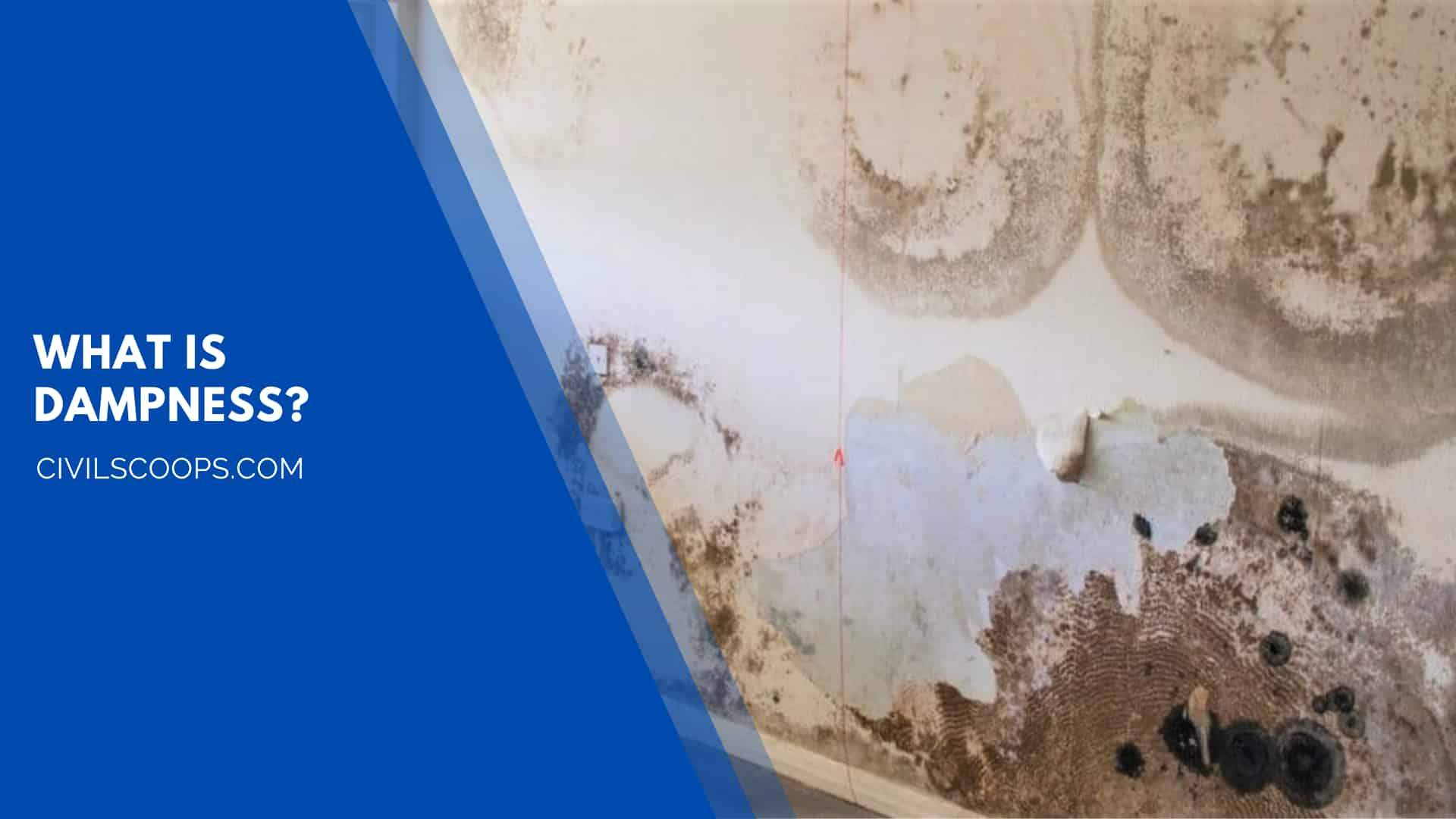
Table of Contents
What Is Dampness?
The most common source of dampness is due to the capillary attraction of sub-soil water in the foundation and walls of the building.
Water can penetrate the masonry through faulty sills, bad workmanship, etc. and hence in buildings, a layer of water repellent material called damp proof course (DPC) is introduced, which acts as a barrier against the capillary rise of water.
Requirements of an Ideal Material for Damp-Proofing
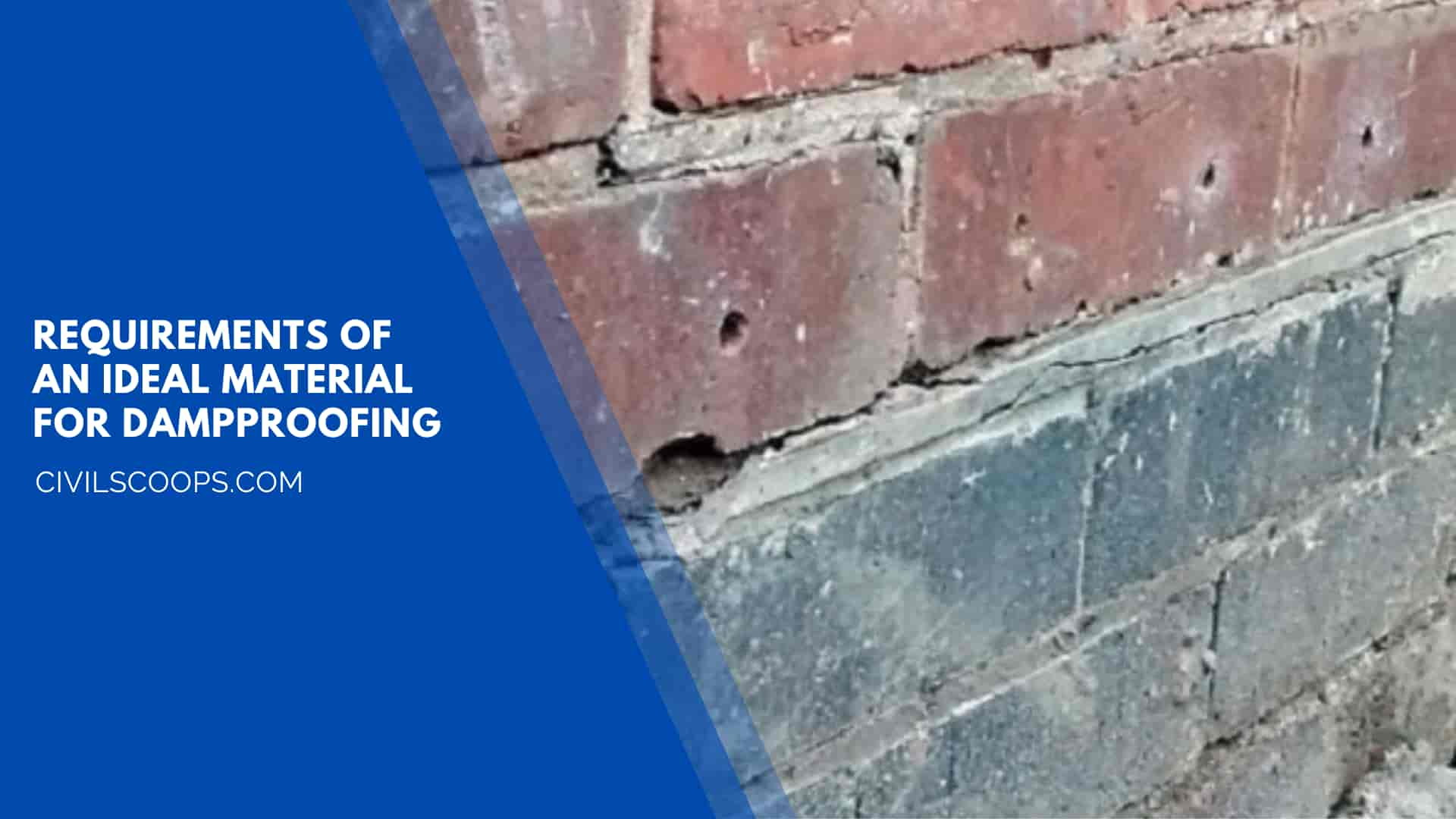
Following are the requirements of an ideal material for damp-proofing:
- Damp Proofing material should be durable.
- It material should be dimensionally stable.
- Material should be reasonably cheap.
- The material should be free from sulfates, chlorides, and nitrates.
- The material should be such that it remains steady and does not allow any movement n itself.
- The material should be perfectly impervious.
- The material should be capable of resisting safely the loads coming on it.
- The material should be flexible so that it can adjust the structural movements without any fracture.
Materials Used for Damp-Proofing
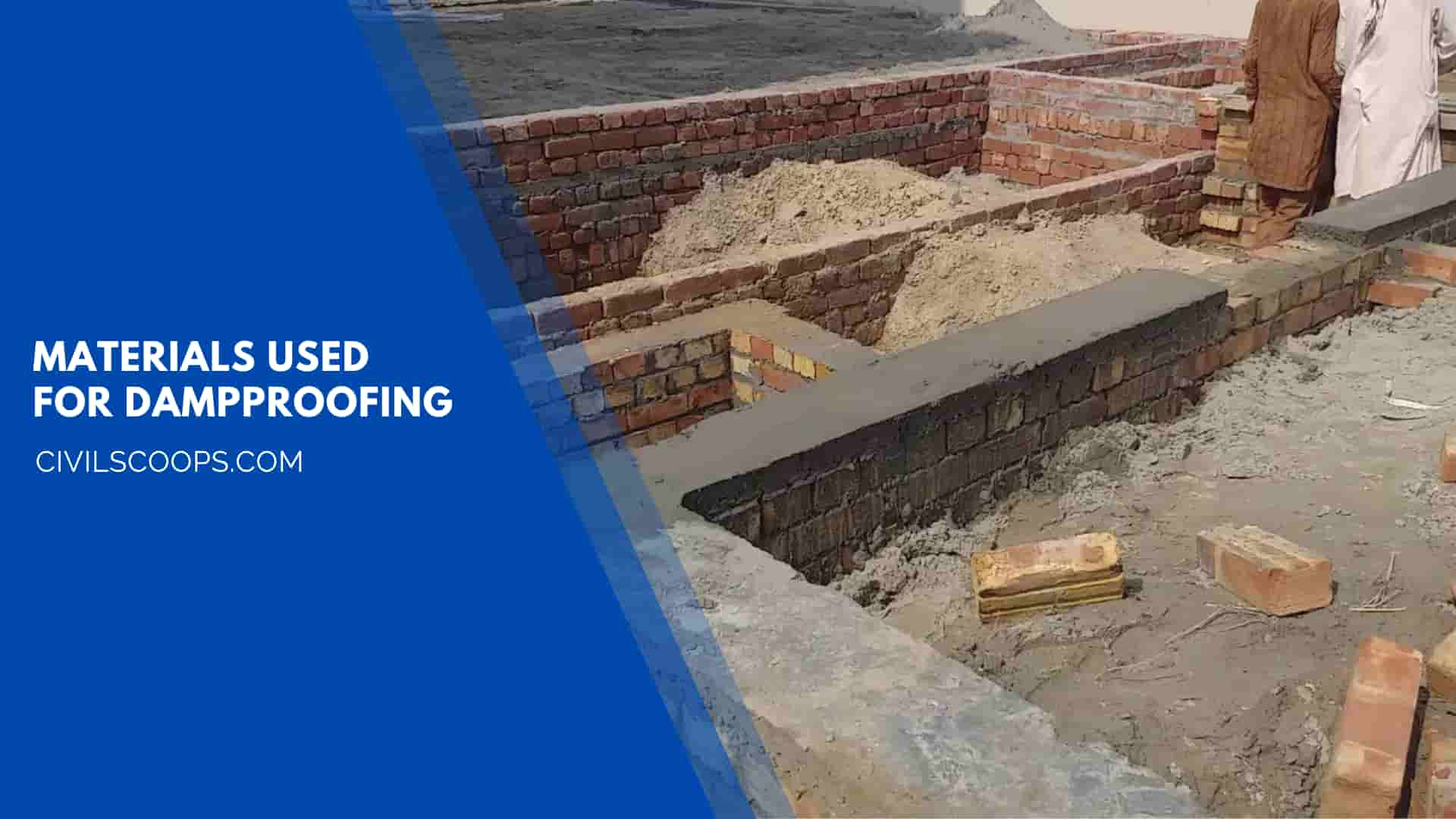
Following are the materials which are commonly used for the damp-proofing:
- Hot Bitumen
- Mastic Asphalt
- Bituminous Felts
- Metal Sheets
- Combination of Sheets and Felts
- Stones
- Bricks
- Mortar The mortar
- Cement Concrete
- Plastic Sheets
1. Hot Bitumen

This is a flexible material and is placed on the bed of concrete or mortar. This material should be applied with a minimum thickness of 3 mm.
2. Mastic Asphalt
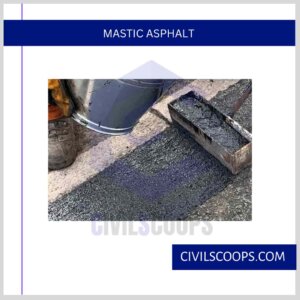
This is a semi-rigid material, and it forms an excellent impervious layer for damp-proofing. Asphalt is a very durable and completely impervious material.
It can withstand only very slight distortion. It is liable to squeeze out in very hot climates or under very heavy pressure.
3. Bituminous Felts

This is a flexible material. It is easy to lay and is available n rolls of normal wall width. It is laid on a layer of cement mortar.
An overlap of 100 mm is provided at the joints, and full overlap is provided at all corners. The laps may be sealed with bitumen, if necessary.
The bitumen felt can accommodate slight movements. But it is liable to squeeze out under heavy pressure, and it offers little resistance to sliding.
The material is available in rolls, and it should be carefully unrolled, especially in cold weather.
4. Metal Sheets

The sheets of lead, copper and aluminum can be used as the membranes of damp-proofing. The lead is a flexible material.
The thickness of lead sheets should be such that their weight is not less than 200 N/m2. The lead can be dressed to complex shapes without fracture, and it possessed high resistance to sliding action.
It is impervious to moisture, and it does not squeeze out under ordinary pressure. It resists ordinary atmospheric corrosion.
The surfaces of lead come in contact by a coating of bitumen or of bitumen paint of high consistency. Copper is a flexible material.
It possesses a higher tensile strength than that of lead. It is impervious to moisture, and it does not squeeze out under ordinary pressure.
It possesses high resistance to sliding action. The external walls, especially of stones, are likely to be stained when a damp-proof course of copper is adopted.
The surface of copper coming Ja contact with mortars is likely to be affected. But, for normal use, the metal does not require any protective coating.
The aluminum sheets can also be used for damp-proofing. But they should be protected with a layer of bitumen.
5. Combination of Sheets and Felts
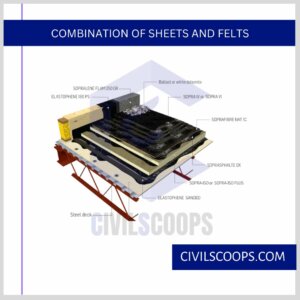
A lead foil is sandwiched between asphalt or bituminous felt. This is known as the lead core, and it is found to be economical, durable, and efficient.
6. Stones

The two courses of sound and dense stones such as granites, slates, etc. laid in cement mortar with vertical breaking joints can work as an effective damp-proofing course.
The stones should extend for the full width of the wall. Sometimes the stones can be fixed. n case of a roof surface, on the exposed faces of the wall, etc.
7. Bricks
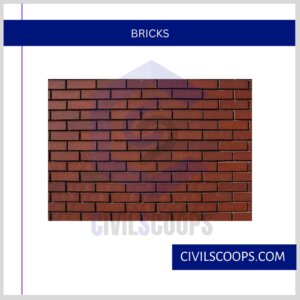
The dense bricks, absorbing water less than 4.50% of their weight, can be used for damp-proofing at places where the dampness is not excessive.
8. Mortar

The mortar to be used for bedding layers can be prepared by mixing 1 part of cement and 3 parts of sand by volume. A small quantity of lime is added to increase the workability.
For plastering work, water-proof mortar can be prepared. It is prepared by mixing 1 part of cement, 2 part of sand and pulverized alum at the rate of 120 N / m3 of sand.
In the water to be used, 0.75 N of soft soap is dissolved per liter of water, and this soap water is then added to the dry mix. The mortar thus prepared is used to plaster the surface.
Alternatively, some patented water-proofing materials such as Pudlo, Cido, Dempro, etc. may be added to the cement mortar.
9. Cement Concrete

A cement concrete layer in the proportion 1: 2: 4 is generally provided at the plinth level to work as a damp-proofing course.
The depth of cement concrete layer varies from 40 mm to 150 mm. It stops the rise of water by capillary action, and it is found to be effective at places where the dampness is not excessive.
10. Plastic Sheets

The material is made of black polythene, having a thickness of about 0.50 mm to 1 mm with the usual width of wall, and it is available in roll lengths of 30 m. this treatment is relatively cheap, but it is not permanent.
What Is Dampness?
What Causes Dampness in Walls?
Damp walls can cause structural damage and result in deterioration of the building. Several factors like water seepage through the walls or leaking plumbing pipes can create a damp and Mould environment.
The biggest disadvantage of damp walls is that it creates an unhealthy indoor environment which can cause damage to fabrics, books, shoes and other household items that are within closed cabinets.
How to Remove Dampness from Wall?
- Find and fix any water leaks near your walls.
- Drain away any water standing in the walls.
- Remove damaged areas of a wall so there are no long-term issues.
- Grab a room fan to dry small damp spots.
- Buy a dehumidifier for large damp patches.
- Use desiccants to absorb moisture.
How to Remove Dampness from Room?
- Open Windows and Doors. One of the easiest ways to dehumidify a room is to open up the windows, says the National Asthma Council.
- Get Humidity-Lowering Houseplants.
- Take Cooler Showers.
- Utilize Your Ceiling Fans.
- Grab the Baking Soda.
- Fix Any Air Leaks.
How to Get Rid of Dampness in Room?
Use dehumidifiers and air conditioners, especially in hot, humid climates, to reduce moisture in the air, but be sure that the appliances themselves don’t become sources of biological pollutants. Raise the temperature of cold surfaces where moisture condenses. Use insulation or storm windows.
How to Get Dampness Out of House?
How to keep your house dry and avoid dampness
- Reduce the amount of moisture produced in the home.
- Provide ventilation, particularly in moisture-prone areas.
- Increase heating to raise the temperature of the air and the cold surfaces.
- Insulate the building to warm up cold surfaces and keep the heat in.
How to Get Rid of Wall Dampness?
The best way to ensure you permanently get rid of your Mould problems is preventing the build-up of moisture in your home, by properly ventilating it at all times. Some people advise purchasing a dehumidifier however these units do require regular emptying, cleaning and often increase energy bills.
How to Measure Dampness in a Room?
The easiest way to measure your indoor humidity level is by using a hygrometer. A hygrometer is a device that serves as an indoor thermometer and humidity monitor.
How to Reduce Dampness in Walls?
You can prevent your room from getting damp by increasing the heat and providing better ventilation and insulation. You can also try treating the damp by installing waterproof tiles, waterproofing your roof and walls, and using a waterproof dampcourse.
How to Reduce Dampness in Basement?
5 Tips to Reduce the Humidity Level in Your Basement
- Open the Windows. A great way to get air circulating in the room is to open up the windows whenever you’re down there.
- Keep It Clean! Storing too many items in your basement will create clutter.
- Seal Up Any Gaps.
- Turn Up the Heat.
- Get a Dehumidifier.
How Do You Get Dampness Out of Your House?
Reduce excess moisture in your home
- Air your home regularly. Open doors and windows for 10-15 minutes each morning, or use a ventilation system.
- Use energy efficient, low emissions heaters. Heat every room being used by someone to at least 18°C.
- Dry washing outside.
- Use extractor fans and rangehoods.
How to Get the Dampness Out of Your House?
Open Your Window
This might seem obvious, but it’s effective. Opening your windows will release the humid air outside, and therefore, will prevent the humidity from collecting onto your windows. So, if it’s not too cold out and you’re suffering from condensation, open a window.
How to Get Rid of Dampness in Basement Apartment?
Get a Dehumidifier
These amazingly helpful devices absorb the water vapor in your basement, preventing the moisture from causing damage and keeping your belongings safe.
How to Prevent Dampness in Walls?
You can prevent your room from getting damp by increasing the heat and providing better ventilation and insulation. You can also try treating the damp by installing waterproof tiles, waterproofing your roof and walls, and using a waterproof damp-course.
How to Control Dampness in Walls?
Here are a few quick and simple remedies for how to stop condensation on walls and ceilings.
- Wipe down windows and sills every morning.
- Deal with steam from cooking.
- Get rid of bathroom moisture.
- Ensure ventilation.
- Keep your house warm.
- Install insulation.
How to Hide Wall Dampness?
- Place massive furniture to cover the dampened part of the wall.
- Install a painting.
- Create a vertical garden.
- Place a massive sculpture or statue to hide the seepage.
- Repainting your place with the help of a painting expert with high-quality paints that let moisture escape.
How to Prevent Damping of Walls?
To prevent damage from showing up on your walls, you can cover the portion with tiles. While this is a useful décor hack, make sure to remove all the damaged plaster and paint from the wall. The tile joints should be sealed with care to prevent any moisture-related damage in the future.
How to Deal with Dampness in a Room?
Here are other ways you can get rid of dampness in bedroom
- Air out your home regularly.
- Check your walls for mould and dampness.
- Heat every room of your home with home heating systems.
- When washing or bathing, open the windows or turn on the extraction fan.
- Put the lids on the saucepans and turn on the extraction hood.
How to Measure Dampness in Walls?
With a drywall scale meter, accurately measuring moisture is as easy as pushing the pins of the meter into the drywall and taking a reading. The meter will provide an exact measurement that you can use to determine the moisture content of the drywall.
What Is Dampness in Building?
Structural dampness is the presence of unwanted moisture in the structure of a building, either the result of intrusion from outside or condensation from within the structure. A high proportion of damp problems in buildings are caused by ambient climate dependent factors of condensation and rain penetration.
What Are the Causes of Dampness in Building?
Damping occurs through the penetration of water into the building components (such as walls, floors, roof or basement etc).
- Poor quality of construction material.
- Faulty construction or bad workmanship.
- Leaking pipes through.
- Capillary action from Groundwater.
How to Prevent Dampness in Building?
Methods of Preventing Dampness in Buildings
- Membrane damp proofing.
- Integral damp proofing.
- Surface treatment.
- Guniting.
- Cavity wall construction.
How to Help Dampness in House?
How to keep your house dry and avoid condensation
- Reduce the amount of moisture produced in the home.
- Provide ventilation, particularly in moisture-prone areas.
- Increase heating to raise the temperature of the air and the cold surfaces.
- Insulate the building to warm up cold surfaces and keep the heat in.
How to Remove Dampness from Home?
Ways to Naturally Dehumidify Your Home
- Absorb the Moisture. If you position pots of calcium chloride in problem areas of your home, you should see a quick reduction in humidity levels.
- Vent Your Home.
- Remove Indoor Plants.
- Take Shorter Showers.
How to Keep Dampness Out of House?
The use of a dehumidifier will immediately reduce the risk of developing moisture problems in the home. Simply put, the only job of a dehumidifier.
[/su_box]
[su_note note_color=”#F2F2F2 ” text_color=”#333333″ radius=”3″ class=”” id=””]
Like this post? Share it with your friends!
Suggested Read –
- All About Uscs | Which Test Gives a Better Estimation of the Friction Angle | Introduction of USCS ( Unified Soil Classification System )
- What Is Sewerage | What Is Storm Drain | Household Drain Systems | House Drainage Parts and Components | Types of Sewer Pipes | Sanitary Pipework
- What Are Defects in Painting | 18 Types of Defects in Painting | How to Prevent Defects in Painting
- Top 10 Companies for Environmental Engineers to Work For
- What Is Consistency of Cement | What Is Initial Setting Time of Cement | What Is Final Setting Time of Cement
[/su_note]
Originally posted 2023-01-27 12:52:09.
